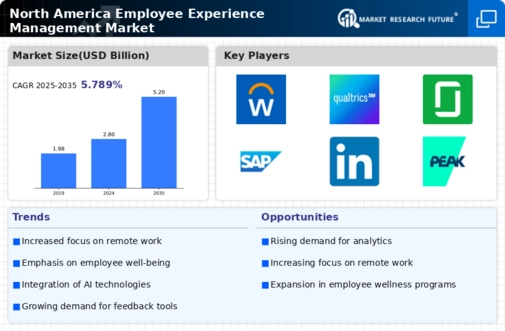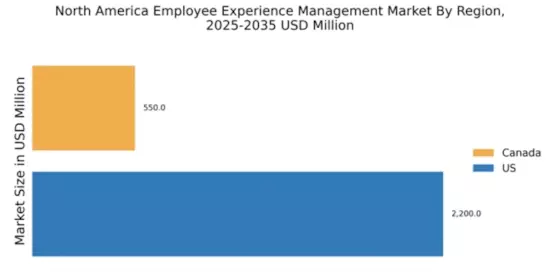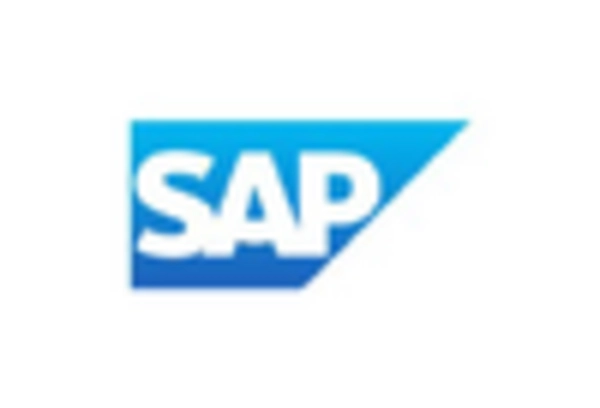Rise of Remote Work Solutions
The shift towards remote work has catalyzed a transformation in the employee experience-management market. Organizations are increasingly adopting remote work solutions to enhance flexibility and productivity. According to recent data, approximately 30% of the workforce in North America is now engaged in remote work, necessitating innovative employee experience strategies. Companies are investing in digital tools that facilitate collaboration and communication among remote teams. This trend indicates a growing recognition of the importance of a cohesive employee experience, regardless of physical location. As businesses strive to maintain engagement and morale among remote employees, the demand for tailored experience-management solutions is likely to rise, driving market growth.
Focus on Employee Feedback Mechanisms
The importance of employee feedback mechanisms is becoming increasingly evident in the employee experience-management market. Organizations are recognizing that regular feedback is crucial for understanding employee needs and improving workplace culture. Data indicates that companies that actively solicit employee feedback see a 14% increase in employee engagement. As a result, businesses are investing in tools and platforms that facilitate real-time feedback and performance evaluations. This trend suggests a shift towards a more participatory approach to management, where employee voices are valued and considered in decision-making processes. The employee experience-management market is likely to expand as organizations seek innovative solutions to enhance feedback mechanisms and foster a culture of open communication.
Emphasis on Diversity and Inclusion Initiatives
Diversity and inclusion have emerged as critical components of the employee experience-management market. Organizations in North America are increasingly recognizing the value of diverse workforces, which can lead to enhanced creativity and innovation. Data suggests that companies with diverse teams are 35% more likely to outperform their competitors. As a result, businesses are implementing comprehensive diversity and inclusion initiatives to foster an inclusive workplace culture. This focus not only improves employee satisfaction but also enhances overall organizational performance. The employee experience-management market is responding to this trend by offering solutions that support diversity training, equitable hiring practices, and inclusive policies, thereby driving demand for innovative management tools.
Integration of Artificial Intelligence in HR Processes
The integration of artificial intelligence (AI) into HR processes is reshaping the employee experience-management market. Organizations are leveraging AI technologies to streamline recruitment, onboarding, and employee engagement initiatives. Recent studies indicate that AI can reduce the time spent on recruitment by up to 75%, allowing HR teams to focus on strategic initiatives. This technological advancement is not only enhancing operational efficiency but also improving the overall employee experience. As businesses in North America increasingly adopt AI-driven solutions, the demand for sophisticated employee experience-management tools is expected to rise. This trend highlights the potential for AI to transform traditional HR practices, making them more responsive to employee needs.
Increased Investment in Employee Training and Development
The market is witnessing a surge in investment in training and development programs. Organizations are increasingly aware that continuous learning opportunities are essential for employee engagement and retention. Recent statistics indicate that companies that prioritize employee development experience 34% higher retention rates. This trend is prompting businesses to allocate substantial budgets towards upskilling and reskilling their workforce. By fostering a culture of learning, organizations not only enhance employee satisfaction but also improve overall productivity. Consequently, the demand for employee experience-management solutions that facilitate training and development is likely to grow, as companies seek to create a more skilled and engaged workforce.


















Leave a Comment